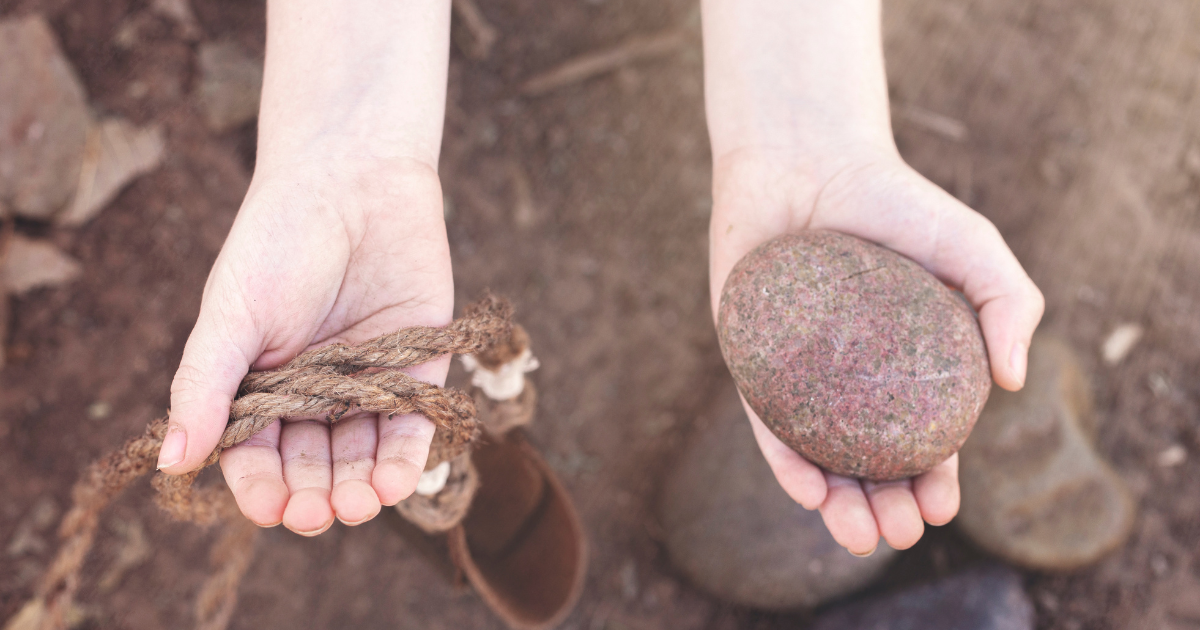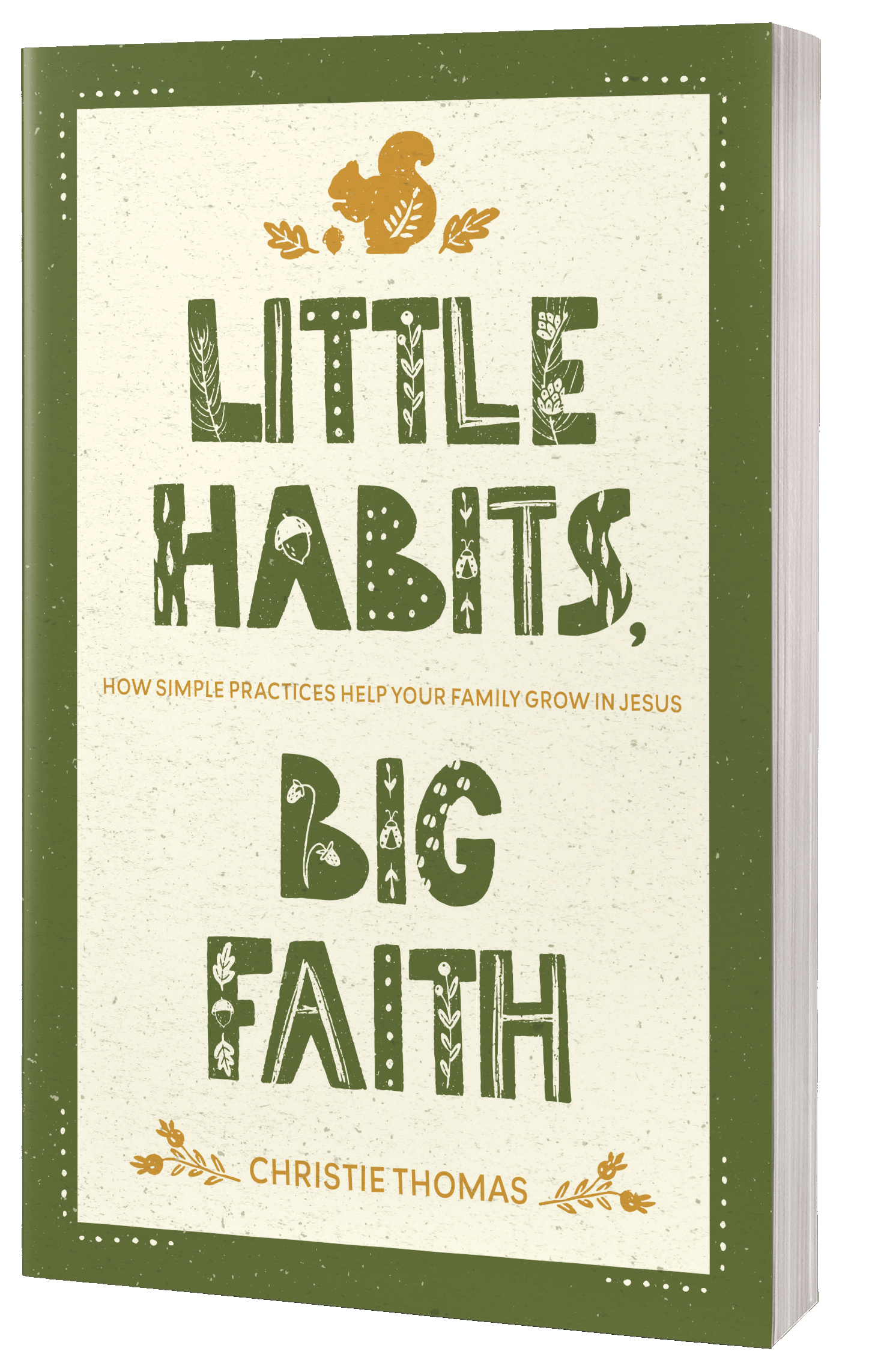Welcome back to The Power of Simple Habits!
In the first lesson, I taught about how habits are stored in our brains, as well as the three parts of a habit: the cue, the routine, and the reward. Even though habits are usually formed automatically by a brain trying to save space, we can intentionally create new habits, and we can change old habits.
So let’s talk about how to start a new habit.
I’m going to give the example of reading the Bible at breakfast time because it’s a habit I struggled to start. I wanted to, but I didn’t know how. You can apply these same principles to ANY habit you wish to start from scratch.
So here’s where I started:
- I would wake up after my children
- then I would rush around grabbing food
- and changing diapers
- and helping kids get dressed
- and emptying the dishwasher
- then rush to drop everyone off at the right places.
My mornings were crazy with a capital C. I was irritable and mean, and rushed and impatient and I hated who I was in the mornings.
I desperately wanted to start reading the Bible with my kids in the mornings but I. Just. Couldn’t. Even when I had the time, I would empty the dishwasher instead of sitting down at the table.
THE PROBLEM?
I had no consistent pattern. My habit was one of late-waking, disorganization, and distractedness.
WHAT I NEEDED:
According to “The Power of Habit”, to start a new habit I would need a simple and obvious cue and a clearly defined reward. The cue would need to be something that was impossible to ignore, and the reward needed to be enticing.
The book that helped me understand habits:
Just a quick note on rewards: rewards can look like anything!
For a child, the reward could be a sticker chart or a hug from mom, but it could also be an emotional payoff. It could be a boost in confidence, or the anxiety going away for a bit, or the feeling of starting the day off WELL. <— That was the reward I needed. I needed to know that I was starting the day well.

So I needed a cue, and I needed a reward.
FORMING THE CUE
One day my husband and I happened upon one of those “paint your own pottery” shops in a mall, and I picked out a huge plate. I painted it as well as I could, with little stalks of wheat up the sides.
The stalks of wheat were to remind me of the bread of life. I put the plate in the center of the table and put the Bible on it. This was my daily cue. It was an impossible-to-ignore reminder that this was a priority for me.

UNDERSTANDING THE REWARD
I also needed a reward, which was that feeling of starting the day off WELL. Had I known about the habit loop at the time, I probably could have shaved a couple years off the journey to building this habit, but instead, it took a while.
BUILD YOUR HABIT
If you want to build a habit quicker, here’s the science that will help you:
You need the cue, you need a routine, and you need to define a reward.
(1) What will be your cue?
You will need to make it something you can’t ignore, like my Bible sitting on its special plate, hogging the table every morning. Your cue could be a time of day (like breakfast or driving your kids to school), or something you see (like the Bible), a smell (like a fresh cup of coffee), or even a special alarm you set.
(2) What will be your routine?
Will you read a couple verses with your kids?
Will you read from a devotional book?
Will you talk about current events and pray for people in pain?
Will you pray over your kids?
What habit do you want to start?

(3) What will be your reward?
Remember, a reward can be anything: an emotional payoff, or that you get to snuggle with your kids, or that you’ll have a good conversation together, or that they smile every time you pray for them. The reward is up to you. You could even make an actual rewards sticker chart for your family, and say that after 5 times of doing the routine, you’ll go out for ice cream together.
To help you figure out the reward, ask yourself this question: what do I get out of this?
CREATE THE CRAVING
But you can’t just do this brain work and expect the habit to grow.
You will need to practice it, and that leads to one more element: craving.
Craving powers the habit loop. Once you start craving something, the cue will automatically start the routine, and if it’s prevented from going through the routine to get the reward, you will feel anxious or angry. This is your brain’s way of saying, “do the routine, do the routine.”
It’s like a scratched CD stuck that keeps repeating a certain line. The most obvious example of this is in someone addicted to smoking. Once their brain receives the cue that it needs a cigarette, it’s nearly impossible to ignore because the brain craves it.
We can take that craving and use it for good.
But what if you don’t crave the reward yet? You will. It just takes a while to create a craving in your brain.
For example, I’m currently trying to get up a half hour earlier than usual. It’s taking a while because my brain currently craves hitting the snooze button MUCH more than it craves the rewards of getting out of bed.
- So I need to fixate on the reward of getting out of bed.
- I need to think about that reward and talk to my family about it.
- I need to play it up in my mind so that I begin to anticipate that reward.
We need to create healthy cravings so that our brain needs to start the habit loop each time we encounter the cue we’ve set up.
PUT IT TOGETHER
So when you start developing your new faith habit, you will need to follow the same pattern.
I made a cue: I saw the plate with the Bible on it. I intentionally did the routine – I read the Bible. And I got the reward – the feeling of a morning well-started.
Now I needed to fixate on that reward. I LOVE that feeling of a morning well-started. It feels amazing. I feel like a good mom. That feeling has spilled over into other parts of my morning, which has made this a keystone habit for our family. We’ll talk more about keystone habits [later]. But my brain starts to crave that feeling, and it’s that craving that powers the habit loop.
So here’s what happened in my brain: the cue-routine-reward system got stored in my brain, in the basal ganglia. Now, if I get the cue and don’t follow with the routine, my brain starts craving the reward. There’s an actual neurological craving in my brain that now says “read the Bible. Read the Bible” and that craving isn’t satisfied until I read the Bible with my kids so I get the reward.
My brain says “finish the pattern”.
GOD MADE OUR BRAINS LIKE THIS
Scientists may have started to understand it just recently but God knew about this habit looping system since he started creating. Let’s use the way he made our brains for GOOD, for changing the trajectory of our family life.
We can partner with God to create cue-routine-reward systems that help us be better parents, that help our kids trust God, and that change our families for eternity.
Tell me you don’t want that!
And it’s all about using how God wired you, about understand and using the way our brains make our thoughts more efficient by storing these habits in a specific spot in little behavior chunks.

To recap, the key to creating new habits is to choose a cue, a routine, and a reward. You need to practice it, but you also need to fixate on the reward until it becomes a craving, so that when you encounter the cue, your brain won’t rest until you do the routine.
You CAN create a new habit. I’ve created a little worksheet to help you create a new habit from scratch. Download it and sketch out your own new habit loop. Then tell me about it!
Download the FREE workbook here!
NEXT TIME: Often, it’s not a matter of creating a new habit, but of changing an old, bad habit. More on that in the next lesson.





0 Comments
Trackbacks/Pingbacks